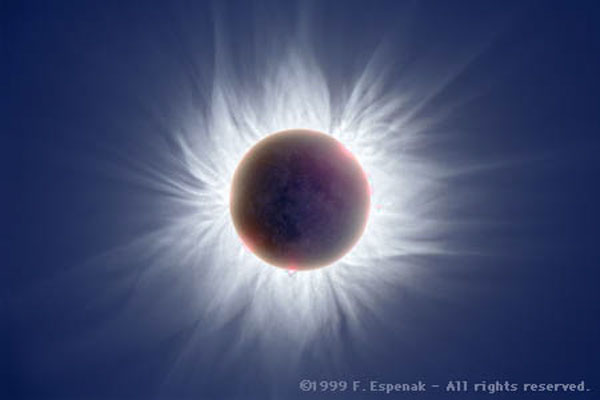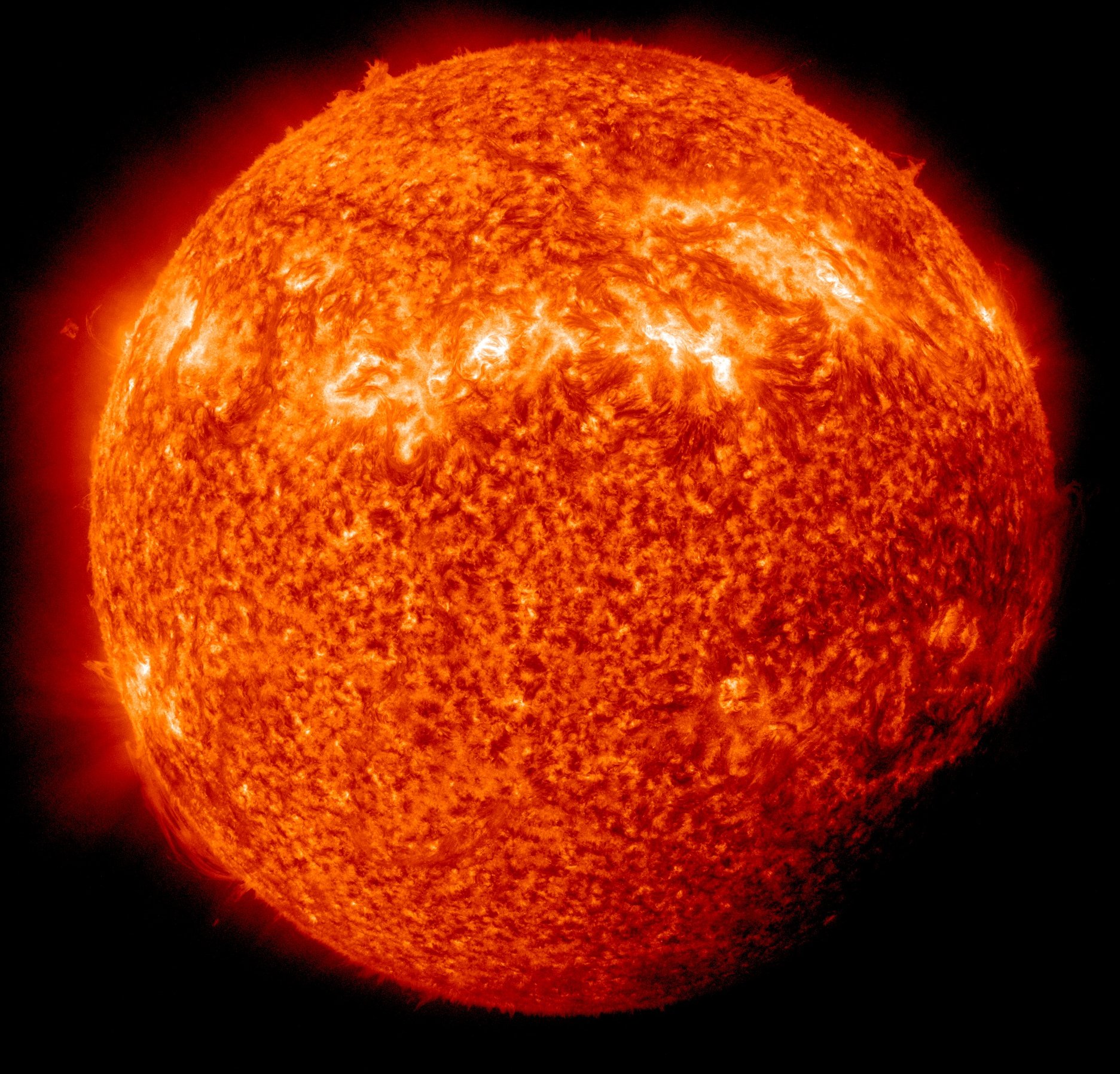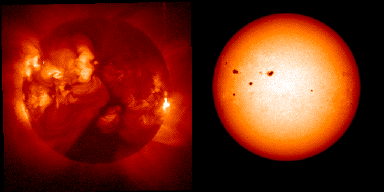
The representative-color images were made from observations of ultraviolet light at a wavelength of 19.3 nanometers (25 times shorter than the wavelength of visible light). Hi-C launched on a sounding rocket on Jin a flight that lasted about 10 minutes.

Both images show a portion of the sun’s surface roughly 85,000 by 50,000 miles in size. Since there is virtually nothing in space to scatter or re-radiate the light to our eye, we see no part of the light and the sky appears to be black.These photos of the solar corona, or million-degree outer atmosphere, show the improvement in resolution offered by NASA’s High Resolution Coronal Imager, or Hi-C (bottom), versus the Atmospheric Imaging Assembly on NASA’s Solar Dynamics Observatory (top). Looking toward the sun we thus see a brilliant white light while looking away we would see only the darkness of empty space. The light from the sun travels a straight line without scattering and all the colors stay together.

In space or on the Moon there is no atmosphere to scatter light. All of these mechanisms can enhance or diminish the beauty or color of a sunrise or sunset. Lord Rayleigh’s explanation ignores the effect of water vapor, dust particles, ozone, chemical pollutants, and eye response. These scattering effects are not however constant. As the light travels the longer distance through the atmosphere most of the blue light gets scattered out and the light that remains has proportionally more orange, leading to the beautiful sunrises and sunsets we are often blessed to see. However, when the sun is near the horizon sunlight must pass through a thicker amount of atmosphere than when it is overhead. This scattered blue light goes out in all directions through the atmosphere and comes to us from throughout the sky during the day. Since red light has a wavelength (700nm) about 1.7 times greater than blue light (400nm) Rayleigh's findings show that blue light has about 9 times greater chance of scattering than red light.

The long waves of sunlight (red) are less effectively scattered than the shorter ones (blue) by the small air particles in our atmosphere. Scattering is proportional to one divided by wavelength to the fourth power. This scattering depends upon particle or molecule size and the wavelength of the incident light. Hence the initial light that was coming from a specific direction is now scattered (re-radiated) in all directions. However, the air particles do not keep the energy from light waves that fall upon them, but quickly re-radiate that light energy in random directions. The cork receives wave energy and then oscillates up and down, and in a similar manner light waves can interact with air molecules. A stone is then dropped into the pond, sending out waves that cause the cork move up and down. Imagine a cork at rest on the surface of a tranquil pond. Mixed together, all the colors of visible light appear white to us. Second, our eyes detect green light better than the other colors and they perceive blue light pretty well. The predominant color in the visible spectrum is blue.

First, all colors of visible sunlight from the short-wave violet to blue, green, yellow, orange, and the long -wave red, are emitted by the Sun, yet not in equal amounts. But to understand his rationale, we need to know two things about how we perceive light. In the 1870’s the English scientist, Lord Rayleigh, weighed in with part of the explanation. Although the complete physical explanation for the blue sky is complex because of length limitations we will focus on the primary mechanism. His notebooks show he monitored sunlight passing through wood smoke, suggesting he understood the basic phenomenon of light scattering. As early as 1500, Leonardo da Vinci tried to explain the sky’s color. Why is the sky blue on Earth, but black in space or on the Moon? October 2000Īlmost everyone admires the lovely blue sky displayed on a crisp, cool autumn day. Vocatio Center for Life Calling and Career.Office of Student Leadership & Engagement.


 0 kommentar(er)
0 kommentar(er)
